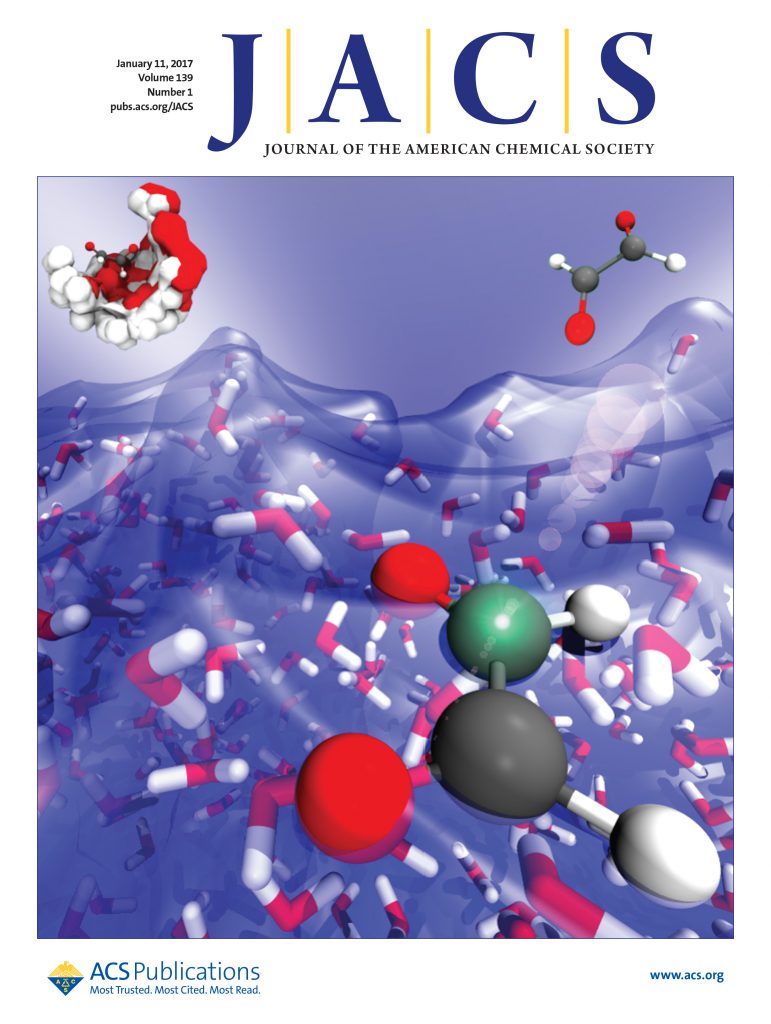Asymmetric Bimetallic Catalysis Enabled Alkenyl Z/E Mutual Isomerization
IF 15.6
1区 化学
Q1 CHEMISTRY, MULTIDISCIPLINARY
引用次数: 0
Abstract
Olefins are fundamental functional groups present in numerous molecules, and the geometrical configuration of the C═C bonds often plays a critical role in determining the properties of these compounds. Alkenyl geometrical isomerization is, in principle, one of the most efficient approaches for accessing stereodefined olefins. While some progress has been made in achieving unidirectional Z → E or E → Z conversion via olefin geometrical isomerization, there remains a strong demand for controllable, bidirectional geometrical isomerization of C═C bonds. Herein, we present a method for Z/E mutual isomerization of alkenyl groups by using a Pd/Cu catalytic system. This process involves Pd-mediated π–σ–π interconversion followed by selective trapping of the π-allyl-Pd intermediates with N-metalated azomethine ylides generated by a chiral Cu-catalyst. The reaction enables the synthesis of chiral non-natural amino acid derivatives bearing Z- and E-alkenyl groups in an enantio- and Z/E-divergent manner, achieving yields of up to 92%, > 20:1 Z/E or E/Z, and >99% ee. Furthermore, the reaction is scalable to gram quantities, and the resulting products can be transformed into valuable molecules adorned with Z- or E-alkenyl groups. Computational studies show that the bimetallic catalytic system better distinguishes among eight stereoisomers of π-allyl-Pd intermediates than the monometallic system, which results in exceptional Z/E-selectivity of the products. This method offers a robust protocol for synthesizing Z- or E-trisubstituted olefins bearing a chiral motif utilizing a readily available Z/E-mixture of substrates.

不对称双金属催化使烯基Z/E相互异构化
烯烃是存在于许多分子中的基本官能团,C = C键的几何构型往往在决定这些化合物的性质方面起着关键作用。烯基几何异构化原理上是制备立体烃最有效的方法之一。虽然在通过烯烃几何异构化实现单向Z→E或E→Z转化方面取得了一些进展,但对C = C键的可控、双向几何异构化的需求仍然很强。本文提出了一种利用Pd/Cu催化体系进行烯基Z/E互异构化的方法。这一过程包括pd介导的π -σ -π相互转换,然后由手性cu催化剂生成的n -金属化亚甲基酰体选择性捕获π-烯丙基pd中间体。该反应能够以对映和Z/ e发散的方式合成具有Z-和e -烯基的手性非天然氨基酸衍生物,收率高达92%,>;20:1 Z/E或E/Z,和>;99% ee。此外,该反应可扩展到克量,所得产物可以转化为带有Z-或e -烯基的有价值的分子。计算研究表明,双金属催化体系对π-烯丙基钯中间体的8种立体异构体的区分比单金属体系更好,从而使产物具有优异的Z/ e选择性。该方法为利用易于获得的Z/ e底物混合物合成具有手性基序的Z-或e -三取代烯烃提供了可靠的方案。
本文章由计算机程序翻译,如有差异,请以英文原文为准。
求助全文
约1分钟内获得全文
求助全文
来源期刊
CiteScore
24.40
自引率
6.00%
发文量
2398
审稿时长
1.6 months
期刊介绍:
The flagship journal of the American Chemical Society, known as the Journal of the American Chemical Society (JACS), has been a prestigious publication since its establishment in 1879. It holds a preeminent position in the field of chemistry and related interdisciplinary sciences. JACS is committed to disseminating cutting-edge research papers, covering a wide range of topics, and encompasses approximately 19,000 pages of Articles, Communications, and Perspectives annually. With a weekly publication frequency, JACS plays a vital role in advancing the field of chemistry by providing essential research.

 求助内容:
求助内容: 应助结果提醒方式:
应助结果提醒方式:


